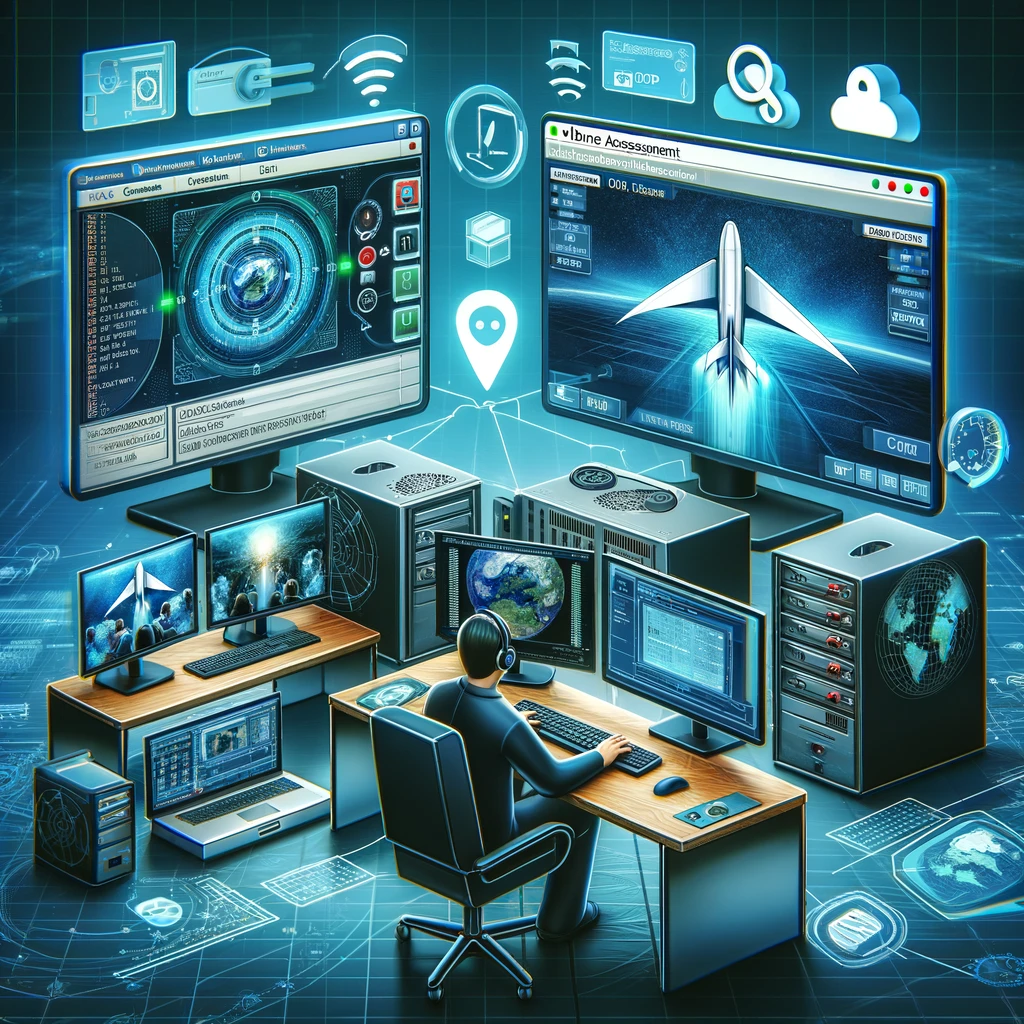
Introduction
Understanding Glider Tests: The New Era of Remote Assessments
Glider tests have emerged as a prominent tool for conducting assessments in the rapidly evolving landscape of remote work and education. These tests, known for their robustness and versatility, are widely used by organizations to evaluate skills, knowledge, and aptitude in a virtual setting. Traditionally, Glider tests have been a trusted method to ensure the integrity and validity of remote assessments, relying heavily on real-time monitoring through video and audio feeds.
The Emergence of Virtualization and Broadcasting Tools in Test Environments
However, with the advent of sophisticated technology, there has been a growing interest in exploring methods to circumvent these tests. Key players in this domain are Virtual Machines (VMs), OBS (Open Broadcaster Software), and Remote Desktop Protocol (RDP). Initially designed for legitimate purposes like software development, broadcasting, and remote computing, these technologies have found an unconventional application in manipulating remote test environments.
Virtual Machines: The Foundation of a Controlled Environment
Virtual Machines stand at the forefront of this technological revolution. By creating an isolated, emulated computer system within your hardware, VMs provide a sandbox environment. Tools like VMware and VirtualBox allow users to install operating systems and run applications in a virtualized environment, nearly indistinguishable from a physical computer. This isolation means software running inside the VM cannot easily discern whether it’s in a virtual environment or on actual hardware.
OBS: Mastering the Art of Video Feed Manipulation
Enter OBS, a powerful broadcasting tool that has found a unique use case in controlling video feeds. OBS allows for creation of sophisticated video scenes, combining multiple sources, including pre-recorded videos, images, and real-time screen captures. In a test scenario, OBS can broadcast a pre-recorded or simulated video feed, effectively presenting a controlled image to the Glider test’s monitoring system.
RDP: Seamless Audio Integration
RDP is a protocol designed for remote computer access to complement the visual aspect. When combined with VMs and OBS, RDP enables the manipulation of audio feeds. By redirecting audio inputs and outputs, a user can simulate real-time responses and sounds, synchronizing them with the visual feed presented by OBS.
Statement of Purpose: Navigating the Grey Zone
This article explores the feasibility and methodologies of circumventing Glider tests using these advanced technologies. We will explore the technical setup required to create a seemingly authentic test-taking environment where the video and audio feeds are controlled, and the Glider system cannot detect the simulation. This exploration serves not only to highlight the vulnerabilities in current remote assessment technologies but also to underscore the ethical and legal implications of such practices.
In the following sections, we will provide a detailed technical guide on setting up a VM, configuring OBS for video feed manipulation, integrating RDP for audio control, and laying out a blueprint for creating an artificial test environment. Our focus will be on the practical application of these technologies, offering step-by-step instructions and considerations for those interested in understanding the extent to which Glider tests can be manipulated.
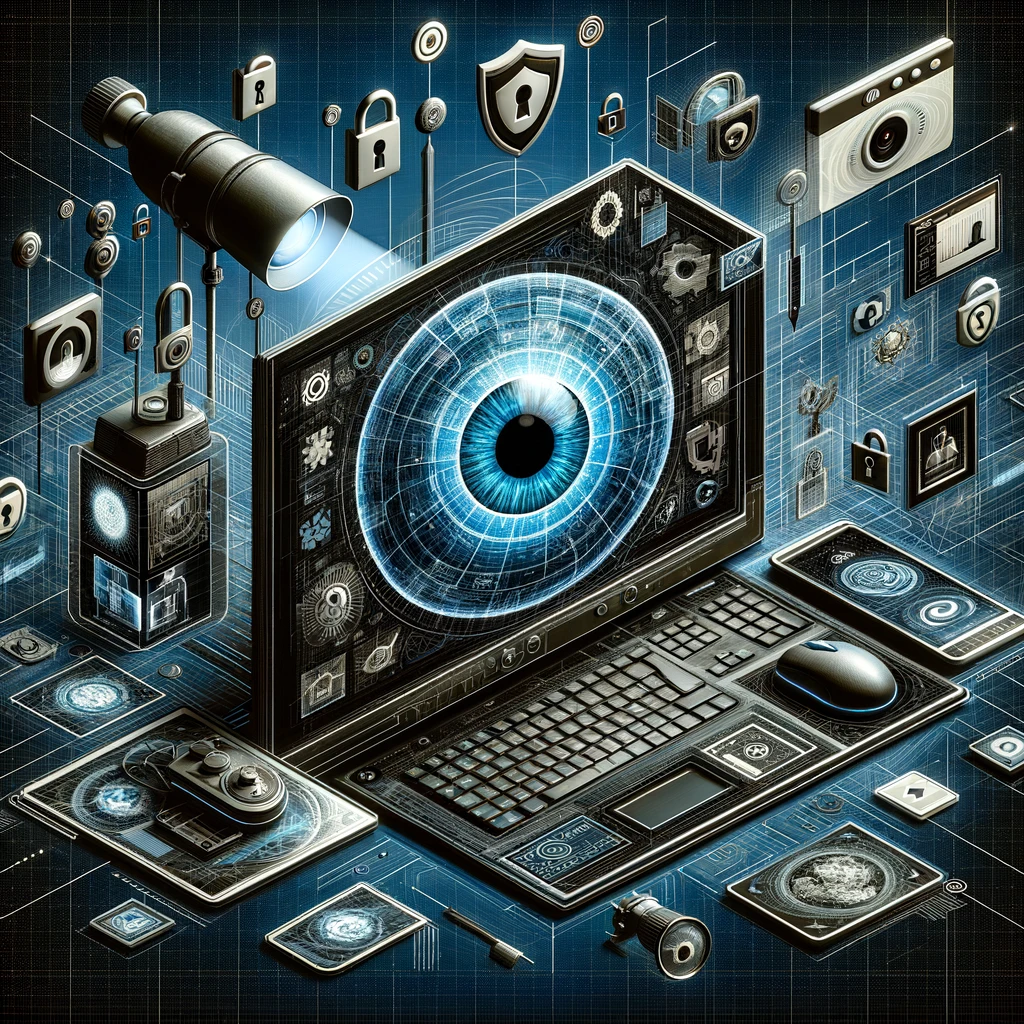
Section 1: Understanding Glider Tests
Overview of Glider and Its Role in Remote Testing
Glider tests have become a mainstay in remote assessments, providing a comprehensive platform for evaluating various skills and aptitudes. Central to its appeal is the ability to administer tests in multiple formats — from coding exercises and multiple-choice questions to complex problem-solving tasks — all within a remote, digital environment. This flexibility makes Glider ideal for organizations assessing candidates or employees in diverse fields.
At its core, Glider is designed to replicate the rigor and structure of traditional testing environments but in a virtual space. It caters to sectors like tech, finance, and education, where the integrity of the test results is paramount. By leveraging a web-based interface, Glider allows users to take tests from any location, provided they have a stable internet connection and a compatible device.
Security Measures Employed by Glider
Glider employs a multifaceted approach to security, ensuring the integrity and reliability of its remote assessments:
-
Browser Lockdown: Glider often requires a secure or lockdown browser, which restricts the ability to navigate away from the test window or access other applications and websites. This minimizes the risk of external assistance or information access during the test.
-
Proctoring Algorithms: Glider uses advanced algorithms for proctoring. These algorithms can detect unusual patterns in user behavior, flagging potential cheating or rule violations.
-
Authentication Procedures: Before starting a test, candidates may undergo stringent identity verification processes, including document verification and biometric analysis, to ensure that the person taking the test is the intended candidate.
-
Data Encryption: Glider encrypts test data and results to safeguard against data breaches and ensure privacy. This is crucial for maintaining the confidentiality of the test material and the test takers’ information.
The Role of Video and Audio Monitoring in Glider Tests
One of the most critical components of Glider’s security protocol is its real-time video and audio monitoring:
-
Video Monitoring: The candidate’s webcam is activated during a test, providing a continuous visual feed. This feed is monitored live by human proctors or recorded for subsequent review. The video monitoring helps ensure that the test taker remains in the frame, does not engage in suspicious activities, and does not receive external help.
-
Audio Surveillance: Alongside video, audio monitoring plays a crucial role. The candidate’s microphone picks up and transmits any ambient sound. This feature helps detect the presence of other individuals in the testing environment or the use of prohibited aids like smartphones.
-
Flagging Anomalies: Both video and audio feeds are scrutinized for anomalies. Sudden changes in lighting, unexpected sounds, or movements that do not align with typical test-taking behavior can trigger alerts. These alerts might lead to a review of the test session for possible rule violations.
By integrating these measures, Glider aims to create a secure and equitable testing environment, mimicking the controlled conditions of in-person assessments. The next sections will explore how these security measures can be circumvented using advanced virtualization and broadcasting technologies.
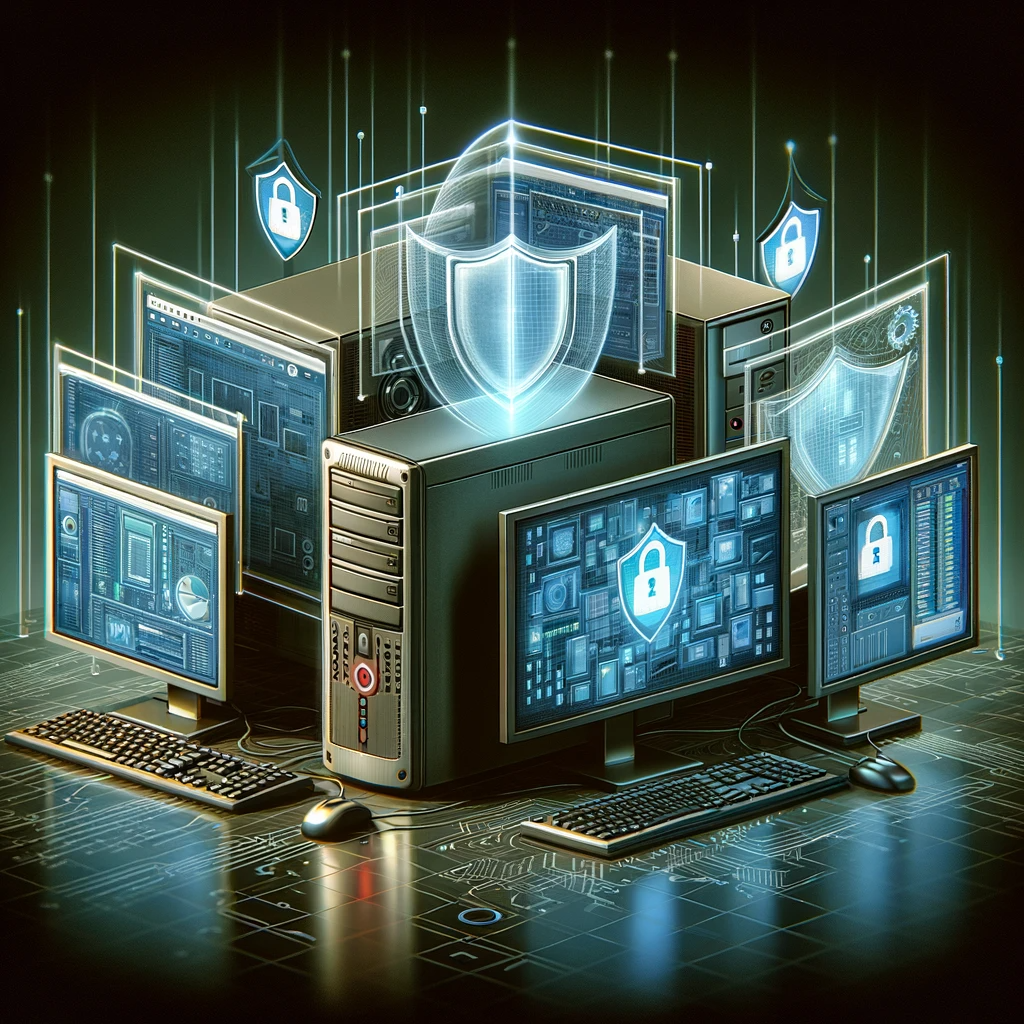
Section 2: Virtual Machines as a Tool for Evasion
Introduction to Virtual Machines and Their Capabilities
Virtual Machines (VMs) represent a pivotal technology in digital privacy and security. At its core, a VM emulates a physical computer, running an operating system and applications as if on actual hardware. This emulation is facilitated by a hypervisor, software that allows multiple operating systems to share a single hardware host.
Critical features of VMs include:
-
Isolation: Each VM operates in a separate environment, isolated from the host system. This means that any software running inside the VM, including monitoring tools like Glider, cannot directly interact with the host system’s resources.
-
Hardware Emulation: VMs mimic physical hardware, which can be tailored to specific needs. Components like CPU, RAM, and storage are allocated from the host machine but appear as distinct, standalone resources to the operating system within the VM.
-
Snapshot and Cloning Features: Using snapshot technology, VMs can be easily cloned or reverted to a previous state. This allows for rapid deployment and testing of different configurations without affecting the host system.
Utilizing VMs to Create Controlled Environments
In the context of evading Glider tests, VMs can be strategically used to create a controlled environment. Here’s how:
-
Setting Up a Dedicated Test Environment: A VM can be configured with only the necessary software for taking the test, minimizing the risk of unwanted applications interfering or being detected by Glider.
-
Controlled Hardware Access: Since Glider relies on hardware monitoring, a VM can be configured to provide limited or altered hardware information. For instance, it can emulate a different webcam or microphone setup, potentially confusing the monitoring software.
-
Isolation from the Host System: Running the test inside a VM ensures that any secondary software or tools used on the host system remain undetected. This isolation is crucial for maintaining privacy and avoiding the detection of any non-compliant software or activities on the central system.
Technical Explanation of How VMs Mask Hardware and Software Footprints
The key to a VM’s ability to evade detection lies in its hardware and software footprint masking:
-
Hardware ID Masking: When Glider or similar software attempts to identify the hardware, a VM can present emulated hardware IDs. This prevents the accurate hardware identifiers of the host system from being exposed.
-
Software Footprint Concealment: VMs can run a clean, minimal operating system instance, free from any software that might raise flags during a test. This OS can be configured to resemble a typical test-taking environment, reducing the likelihood of detection.
-
Network Control: Using virtual network adapters, the VM can control its internet connection independently of the host, potentially rerouting or filtering traffic to avoid detecting prohibited tools or websites.
-
Emulating Normal User Behavior: Through advanced settings, VMs can be configured to simulate mouse movements, keystrokes, and other user behaviors. This can be crucial in convincing monitoring software like Glider that the test environment is genuine and not artificially manipulated.
By leveraging these features, VMs become a potent tool for creating an undetectable testing environment, allowing users to operate beneath the radar of sophisticated monitoring tools like Glider. The following sections will delve into the specifics of using OBS for video manipulation and RDP for audio control, further enhancing the ability to create a controlled testing environment.

Section 3: Manipulating Video Feeds with OBS
Introduction to OBS and Its Functionalities
Open Broadcaster Software (OBS) is a versatile, open-source program widely used for video recording and live streaming. Its flexibility and range of features make it a powerful tool for creating and managing video feeds. Key functionalities of OBS include:
-
Scene Composition: OBS allows users to create scenes comprising multiple sources, like images, videos, and live captures from webcams or screens.
-
Source Switching: Users can seamlessly switch between different sources within a scene, enabling dynamic changes in the video feed.
-
Filters and Effects: OBS supports various filters and effects to enhance or modify the video and audio sources, such as chroma keying (green screening), color correction, and audio mixing.
-
Virtual Camera Output: Crucially, OBS can output its video feed to a virtual camera, making it possible to use the composed scene as a webcam feed in other applications, including Glider’s test environment.
Using OBS to Create Controlled Video Feeds
To manipulate video feeds for Glider tests, OBS can be strategically set up as follows:
-
Setting Up Scenes: Create a scene in OBS that resembles a natural testing environment. This can include a background that mimics an actual room and a video source that could be a looped recording of the test taker.
-
Incorporating Live Elements: Integrate live elements like a real-time clock or a responsive application window into the scene. This helps to create an illusion of real-time activity and can be crucial in bypassing tests that look for static or looped images.
-
Fine-tuning with Filters: Use OBS’s filters to adjust lighting and color to match a typical testing environment, making the feed appear more authentic.
-
Virtual Camera Configuration: Configure OBS to output the final composed scene to a virtual camera. This virtual camera can then be selected as the video source in Glider’s test settings, replacing the webcam feed.
Techniques for Simulating Realistic Environments and Activities
To effectively mimic a genuine test-taking scenario, consider the following techniques:
-
Realistic Backgrounds and Lighting: Choose backgrounds and lighting settings resembling a typical room where one might take a test. Pay attention to details like shadows and room layout.
-
Looped Video Feeds: If using a pre-recorded video of the test taker, ensure the loop is seamless and incorporates natural movements and behaviors expected during a test.
-
Incorporating Interactive Elements: Adding interactive elements like a live browser window showing time-sensitive content (e.g., a ticking clock or a live news feed) can enhance the scene's realism.
-
Audio Synchronization: If OBS is used with an audio manipulation tool, ensure the audio syncs with the visual feed. This might include timing keystrokes or mouse clicks with corresponding observable actions.
By utilizing OBS’s capabilities to their fullest, users can create a sophisticated and realistic video feed indistinguishable from a genuine test environment to the monitoring software. The next section will cover the role of RDP in controlling audio feeds to complement the video setup.
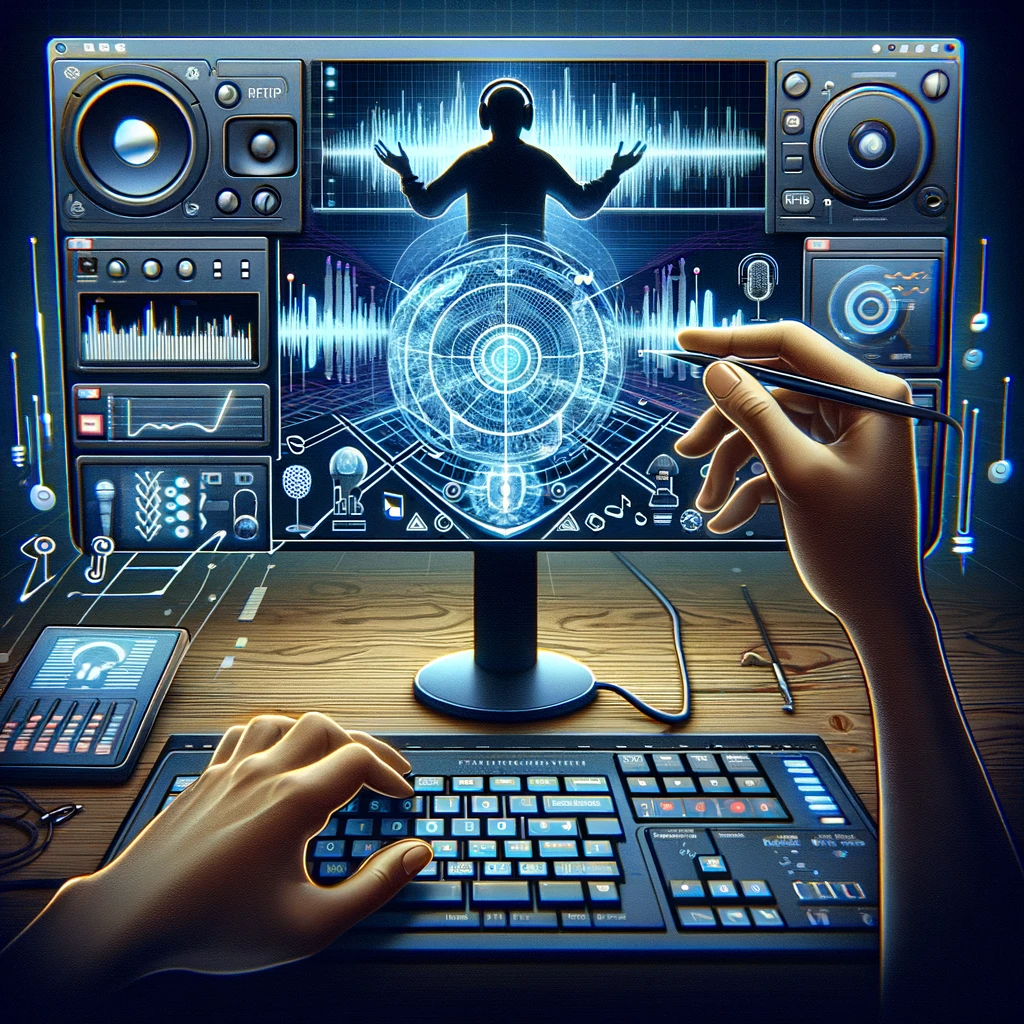
Section 4: Audio Control through RDP
Overview of Remote Desktop Protocol and Its Audio Capabilities
The Remote Desktop Protocol (RDP) is a proprietary protocol developed by Microsoft that provides users with a graphical interface to connect to another computer over a network connection. RDP is used for accessing and controlling remote desktops and can redirect audio input and output between the client and server machines. This feature is handy for scenarios where audio manipulation is required.
Critical aspects of RDP’s audio capabilities include:
-
Audio Redirection: RDP allows audio redirection from the remote desktop to the local client and vice versa. Any sound played on the remote machine can be heard locally, and audio input (like a microphone) on the client can be transmitted to the remote desktop.
-
Sound Quality and Bandwidth Adjustment: RDP provides options to adjust the audio quality, which can help manage bandwidth usage and ensure sync with video feeds.
-
Real-Time Audio Streaming: The protocol supports real-time audio streaming, which is essential for scenarios where immediate audio feedback is necessary, such as in a testing environment.
Methods for Manipulating Audio Feeds in an RDP Session
Manipulating audio feeds during a Glider test through RDP involves several steps:
-
Establishing an RDP Session: Set up an RDP session between two machines — the client (from which the test is taken) and the server (which will be used for audio manipulation).
-
Redirecting Audio Input: On the RDP client settings, enable the option to use the local microphone on the remote server. This way, any audio input on the client side can be transmitted to the remote server.
-
Manipulating Audio on the Server: Use audio editing or mixing software to alter or generate desired audio feeds. This can include simulating voice responses or ambient sounds typical in a test-taking environment.
-
Streaming the Manipulated Audio Back to the Client: RDP returns The altered audio feed to the client machine. This audio will be what is picked up by Glider’s monitoring system.
Synchronizing Audio and Video to Appear Genuine
To ensure the authenticity of the test-taking environment, synchronizing the manipulated audio with the video feed is crucial. Here are some strategies:
-
Timing Audio Responses: If the video feed includes movements like talking or typing, the audio should be timed to match these actions. For instance, if the video shows the test-taker speaking, the audio should align with these movements.
-
Background Noise Consistency: Maintain a consistent background noise level that matches the visual setting. For example, the audio should be quiet and constant if the video shows a calm room.
-
Delay Adjustments: Be mindful of any delays caused by audio processing or streaming. Adjust the timing of the audio output to ensure it remains in sync with the video feed.
-
Testing and Calibration: Before taking the actual test, conduct several dry runs to test audio and video synchronization. Adjust the settings in the RDP and OBS to achieve the best results.
A highly controlled and seemingly authentic test environment can be created by effectively utilizing RDP for audio control and synchronizing it with the OBS video feed. This setup, while technically sophisticated, highlights the potential for manipulating remote testing environments in ways that are challenging to detect.
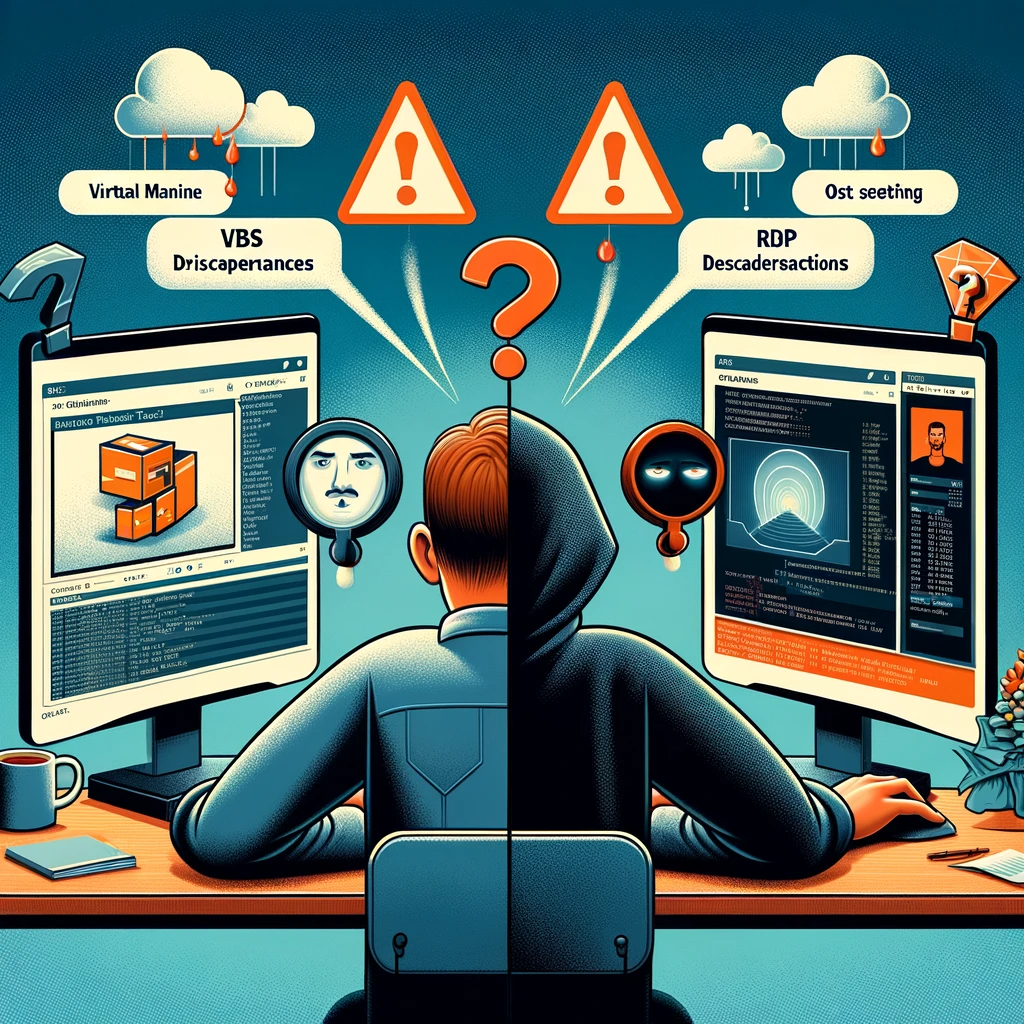
Section 5: Limitations of Glider in Detecting Simulated Environments
Analysis of Glider’s Detection Capabilities
Glider, like many remote monitoring solutions, is designed to ensure test integrity by detecting unusual patterns or anomalies in test-taking behavior. However, the technologies of Virtual Machines (VMs), Open Broadcaster Software (OBS), and Remote Desktop Protocol (RDP) present unique challenges in this regard. Let’s break down these challenges:
-
Detecting VM Usage: Glider tests are typically run on the user’s local machine, where they monitor hardware and software footprints. VMs, however, create an isolated environment that emulates hardware, making it difficult for monitoring software to detect that the test is not being taken on a physical machine.
-
OBS Video Manipulation Detection: OBS can simulate realistic video feeds, including live elements and interactive scenarios. This level of sophistication in video feed simulation can make it challenging for Glider to differentiate between a genuine video feed and a manipulated one.
-
RDP Audio Manipulation Detection: RDP can stream manipulated audio feeds that sync with the video. These feeds' real-time nature and quality can be convincing enough to pass as natural sound, further complicating Glider’s detection capabilities.
Challenges in Differentiating Real and Simulated Inputs
Glider’s algorithms are based on pattern recognition and anomaly detection, but they face several challenges:
-
Complexity of Behavioral Analysis: Analyzing human behavior, primarily through a digital medium, is inherently complex. OBS and RDP allow for creating realistic, natural-looking, and sounding test environments, which can closely mimic genuine user behavior.
-
Technological Advancements in VMs, OBS, and RDP: As these tools become more advanced, they offer increasingly sophisticated ways to replicate real-world scenarios. This advancement continually raises the bar for what monitoring software like Glider needs to detect.
-
Limits in AI and Machine Learning: While Glider employs AI and machine learning algorithms, these technologies have limitations in contextual understanding and may not always accurately distinguish between natural and artificial environments.
Technological Limitations in Remote Monitoring Software
Remote monitoring software, including Glider, faces inherent technological constraints:
-
Hardware and Software Diversity: The vast diversity in user hardware and software configurations makes creating a one-size-fits-all monitoring solution challenging. This diversity can be exploited using VMs, which emulate various hardware and software environments.
-
Network-Based Limitations: Encryption and network security practices can limit monitoring solutions that rely on network data, which can obscure or protect data from being analyzed.
-
Privacy Constraints: There are ethical and legal boundaries regarding how deeply a software can probe into a user’s machine, which limits the extent to which monitoring software can scrutinize a user’s environment.
-
Real-Time Analysis Challenges: Conducting real-time analysis, especially with high-fidelity audio and video data, requires significant computational resources and sophisticated algorithms, which can limit real-time detection.
In summary, while Glider provides robust mechanisms for ensuring test integrity, using advanced tools like VMs, OBS, and RDP introduces significant challenges in its ability to detect simulated test-taking environments reliably. As technology continues to evolve, so will the methods and sophistication of remote testing and the means to circumvent their security measures.
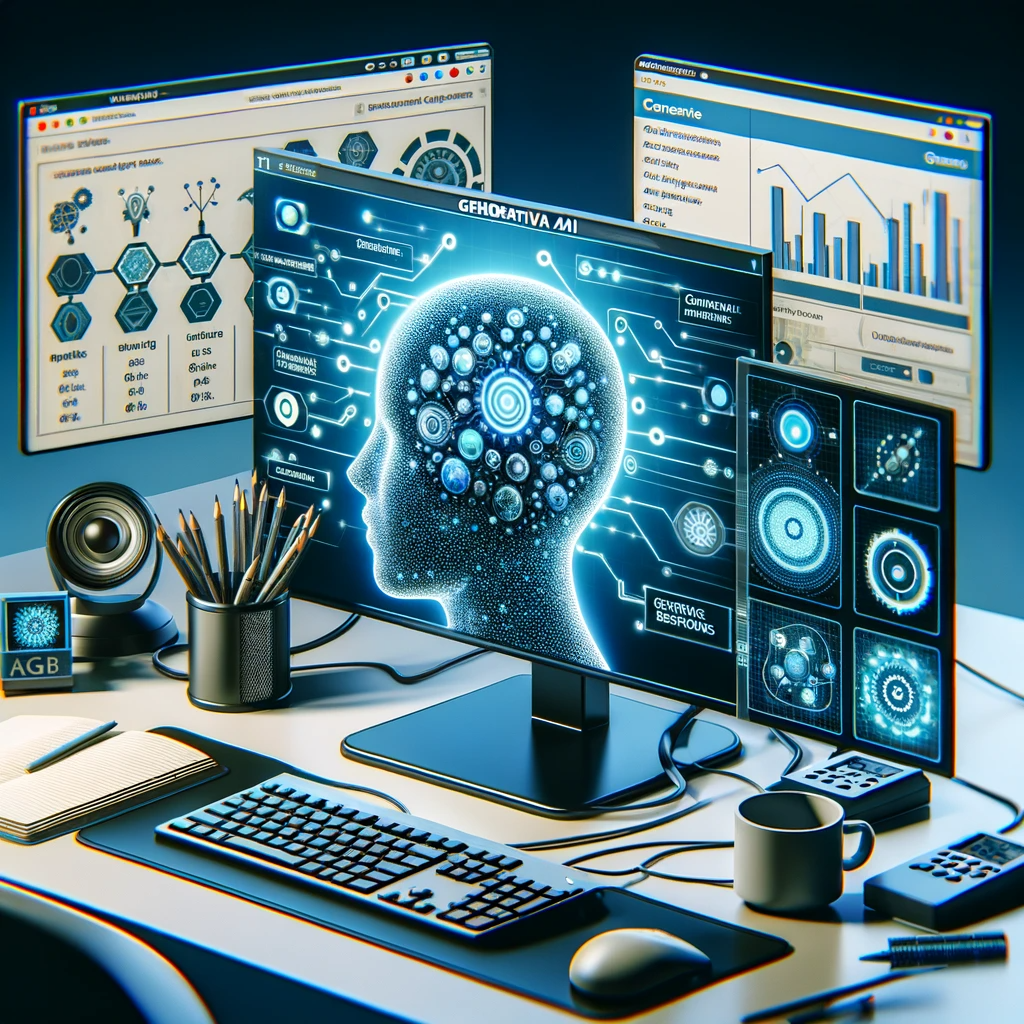
Section 6: Utilizing Generative AI to Aid in Test-Taking
Introduction to Generative AI and Its Potential Applications
Generative AI is a class of artificial intelligence technologies that can generate new content, ranging from text and images to code and audio. These systems learn from vast datasets to produce original outputs that mimic the known material. Critical applications of Generative AI include natural language processing (for chatbots and content creation), image generation, and even automated coding.
Notable features of Generative AI include:
-
Adaptive Learning: These systems continuously learn from new data, improving their accuracy and relevance.
-
Diverse Content Generation: They can create various content types, adapting to multiple contexts and requirements.
-
Predictive Capabilities: Generative AI can anticipate user needs or questions, offering relevant and timely responses.
Using Generative AI from the RDP Host for Test-Taking
Generative AI can be leveraged in the context of a Glider test, mainly when controlled via an RDP session. Here’s how:
-
AI-Assisted Responses: Generative AI systems can be used to generate answers or solutions for test questions. This is particularly useful for coding, problem-solving, or essay-writing tests.
-
Integration with Test Environment: The AI system can be run on the RDP host server, separate from the testing machine. AI-generated responses can then be sent to the test-taking environment, either automatically or manually.
-
Customization for Test Content: Generative AI models can be trained or tailored to specific subjects or questions, enhancing their effectiveness in providing accurate and relevant test responses.
-
Real-Time Assistance: Since Generative AI operates in real-time, it can provide immediate assistance during the test, akin to having an intelligent assistant.
The Value of the Glider Test in Light of Controlled Testing Environments
In a scenario where the test-taking environment is entirely controlled and augmented by advanced technologies like Generative AI, the value and integrity of Glider tests come into question:
-
Integrity of Test Results: The primary concern is the integrity of the test results. If candidates use AI and other technologies to assist them, the results may no longer accurately reflect their abilities.
-
Relevance of Testing Methods: This scenario raises questions about the relevance and effectiveness of current remote testing methods. Tests may need to evolve to assess skills and knowledge in ways that AI cannot easily replicate or assist.
-
Ethical Considerations: Using such technologies in testing scenarios raises significant ethical considerations. It challenges the fairness and equality of the testing process, as not all test-takers will have access to or choose to use such advanced tools.
-
Potential for Innovation: On the flip side, this situation could drive innovation in testing methodologies, prompting the development of more sophisticated and AI-resistant assessment techniques.
In conclusion, while using Generative AI and controlled environments presents new possibilities in test-taking, it simultaneously poses substantial challenges to the validity and fairness of tests like Glider. This underscores the need for continual evolution and adaptation in remote assessment technologies and methodologies.

Section 7: Legal and Ethical Implications
Legality and Ethics of Monitoring in Remote Testing
Using software like Glider for remote testing raises significant legal and ethical questions, particularly regarding the extent of monitoring and data collection. These concerns can be broken down into several key areas:
-
Surveillance and Privacy: The degree of surveillance that Glider and similar software perform can be seen as intrusive. The software often requires access to a user’s webcam, microphone, and sometimes even screen-sharing capabilities. This level of access can be likened to a form of digital surveillance, raising questions about privacy rights and the ethical implications of such extensive monitoring.
-
User Consent and Opt-Out Options: When taking a test that uses Glider, users are typically required to agree to these monitoring conditions. However, the lack of a genuine option (since opting out would mean not taking the test) places users in a difficult position. This raises questions about the voluntariness of consent and test-takers rights to control their digital environment.
-
Ownership of Infrastructure: In many cases, the test-takers personally own the hardware and network used to take these tests. This ownership questions the legality of enforcing certain types of software on private equipment. The issue becomes even more complex in workplaces or educational institutions where the hardware might be institutionally owned.
-
Legal Definition of Malware: From a technical standpoint, malware is defined as malicious software installed on a device without the user’s informed consent or performing harmful actions on the device. While Glider’s monitoring and data collection functionality aligns with some actions performed by malware, it operates within a legal framework where the user ostensibly consents to these actions for the specific purpose of test-taking.
Glider’s Positioning as a Testing Tool Versus Malware
The perception of Glider as a form of malware is a contentious issue:
-
Glider’s Functionality Within Legal Frameworks: Although Glider performs actions similar to some types of malware, it operates under the premise of consent and for a specific, non-malicious purpose. This consent, albeit under the pressure of necessity (e.g., for academic or employment reasons), is a critical factor that differentiates it from typical malware.
-
Contextual Use and Misuse: The critical distinction lies in the intent and context of use. In the case of Glider, the intent is to maintain the integrity of the testing process, not to harm the user or the device. However, the extent of data collection and monitoring by such software is a subject of ongoing debate regarding user privacy and rights.
-
Legal Challenges and Precedents: The legal standing of such software may be subject to challenge, particularly in jurisdictions with stringent privacy laws. The balance between the need for integrity in testing and the individual’s right to privacy and control over their devices is a complex legal issue.
-
Ethical Considerations: Ethically, the debate centers around the appropriateness of such invasive measures for test integrity. It highlights the need for developing less intrusive methods of maintaining honesty and fairness in remote assessments.
In conclusion, while using Glider and similar software in remote testing is legally sanctioned under current frameworks, it presents significant ethical and legal challenges. These challenges revolve around privacy, user consent, the rights of individuals to control their digital and physical environments and the definition and perception of such software within the broader context of digital rights and cybersecurity.
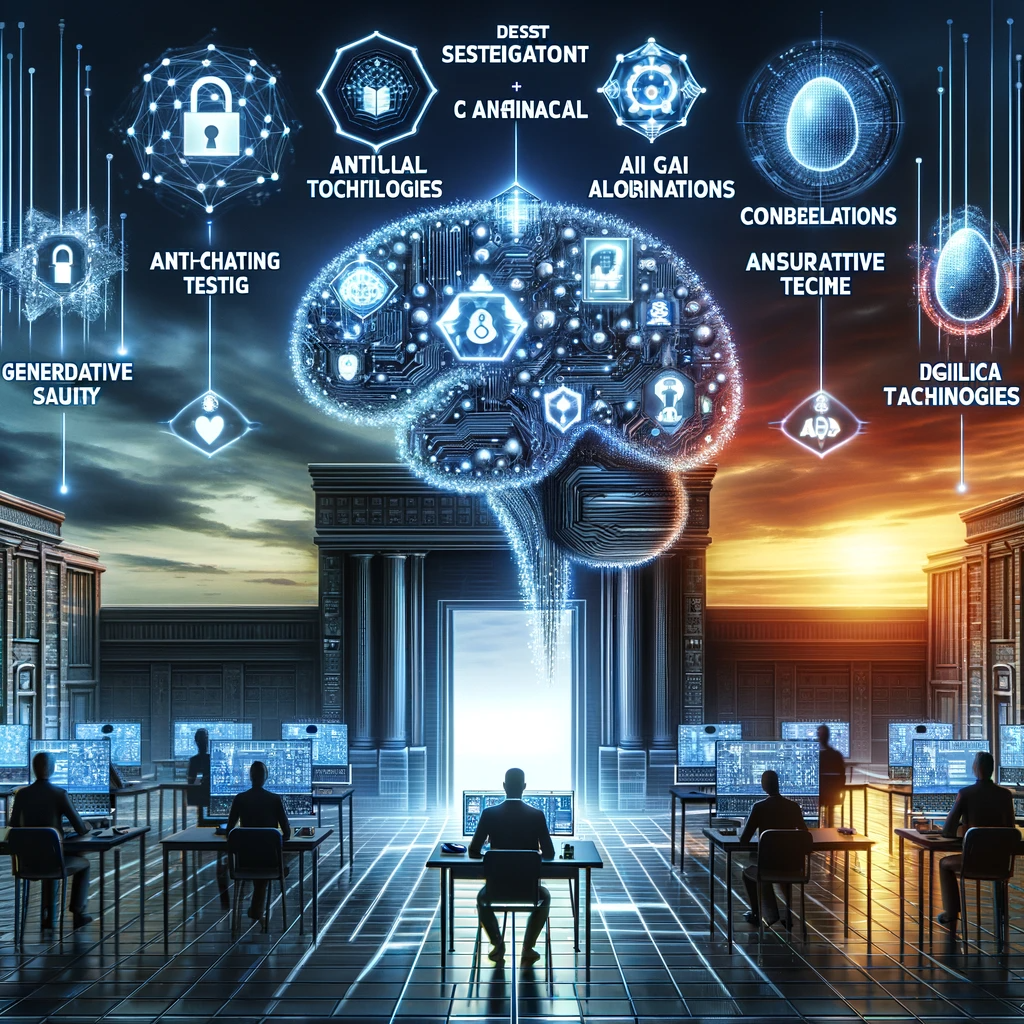
Section 8: Future of Remote Testing and Anti-Cheating Technologies
Speculation on Future Developments in Remote Testing Security
The landscape of remote testing is evolving rapidly, especially in the face of advanced technologies that allow complete control over the test-taking environment. Future developments in remote testing security are likely to focus on several key areas:
-
Advanced Behavioral Analysis: With the rise of AI and machine learning, future remote testing systems may employ more sophisticated behavioral analysis algorithms. These could analyze patterns of mouse movements, keystrokes, and even eye tracking to ensure that the test-taker’s behavior aligns with expected patterns.
-
Biometric Verification: Technologies like facial recognition, fingerprint scanning, and voice recognition could be integrated into remote testing platforms to ensure the test-taker's identity throughout the test duration.
-
AI-Enhanced Monitoring: Leveraging AI to analyze video and audio feeds in real time could allow for more sophisticated detection of anomalies or inconsistencies in the test-taking environment.
-
Secure Browser Environments: The development of more advanced, safe browser environments that restrict the ability to access external applications and websites could be a focus. These environments aim to prevent the use of unauthorized resources while maintaining user privacy.
Potential Advancements in Anti-Cheating Technologies
As test-takers find ways to utilize tools like Generative AI, anti-cheating technologies will also need to advance:
-
AI Countermeasures: We might see the development of AI systems specifically designed to detect the use of other AI tools, including Generative AI, in the test-taking process.
-
Dynamic Test Content: Creating dynamic, adaptive test content that changes based on the test-taker's responses could minimize the effectiveness of pre-programmed AI assistance.
-
Contextual and Conceptual Questioning: Moving toward test questions that require a deeper understanding, contextual thinking, or real-world problem-solving, areas where Generative AI might currently need to catch up.
The Ongoing Cat-and-Mouse Game
The interaction between test security and evasion techniques can be seen as a continuous cat-and-mouse game:
-
Evolving Evasion Techniques: As testing platforms implement new security measures, individuals may develop more advanced methods to circumvent these measures, using emerging technologies and creative solutions.
-
Continuous Security Updates: In response, testing platforms must continually update their security protocols and tools to address new forms of evasion.
-
Ethical and Skill-Based Considerations: A vital consideration in this dynamic is the moral implication of using such evasion techniques and whether using tools and resources, even sophisticated ones like Generative AI, can still be considered a legitimate demonstration of test-taker skills and knowledge.
Conclusion
In conclusion, the future of remote testing and anti-cheating technologies is set to be an area of significant innovation and ethical debate. As technology's boundaries expand, so will the strategies for securing and attempting to bypass these systems. This dynamic challenges both the creators of these testing platforms and the users to continually adapt and consider the broader implications of their actions in the digital testing environment.
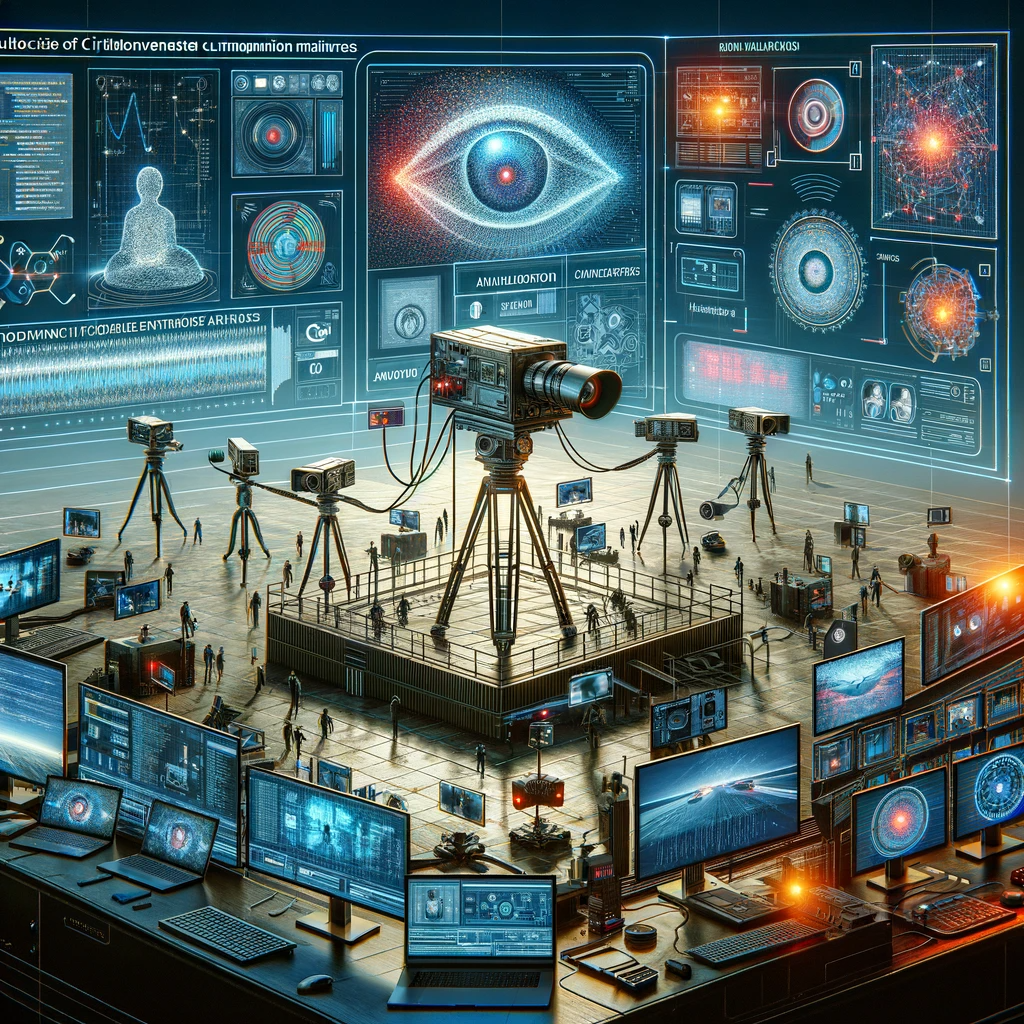
Automating the detection of circumvented test environments, particularly in the Glider context, involves various technical challenges. Here’s an assessment of these challenges and the associated costs:
Technical Challenges
-
Detection of Virtual Environments: Identifying when a test is being taken within a virtual machine (VM) is complex. VMs are designed to emulate real hardware, making them difficult to distinguish from physical machines. Advanced VMs can often mask their virtual nature, complicating automated detection.
-
Recognizing Manipulated Video/Audio Feeds: Automated systems must be sophisticated enough to discern between genuine and manipulated video/audio feeds, such as those created by OBS or altered through RDP. This requires advanced pattern recognition and anomaly detection algorithms, which can be challenging to develop and implement.
-
Behavioral Analysis: Analyzing test-taker behavior for signs of cheating (like unusual patterns in mouse movements or keystrokes) requires complex AI algorithms. These algorithms must account for various normal behaviors to avoid false positives.
-
Integration with Other Technologies: Glider must integrate with various software and hardware technologies to enhance its detection capabilities. This includes advanced proctoring software, AI-based monitoring tools, and possibly biometric verification methods.
-
Constant Updating and Adaptation: As methods to circumvent tests evolve, so must the detection systems. This requires ongoing development and updates to the Glider platform, which can be resource-intensive.
Implementation and Costs
-
Development Costs: Developing advanced AI algorithms and integrating sophisticated monitoring technologies requires significant investment in research and development. This includes hiring expert personnel, procuring technology, and investing in data analysis tools.
-
Operational Costs: Continuous operation of advanced monitoring systems involves substantial computational resources. This includes server costs, data storage, and bandwidth, especially for processing high-fidelity video and audio data in real-time.
-
Maintenance and Updates: Regular maintenance and updates to keep up with new circumvention techniques add to the operational costs. This involves software updates and potentially hardware upgrades to support more advanced monitoring.
-
Privacy and Compliance Costs: Implementing more intrusive monitoring methods might require adherence to stricter privacy laws and regulations, particularly in regions with strong data protection laws. Compliance with these regulations can incur additional costs.
-
Balancing Accuracy and Intrusiveness: Developing a system that is both accurate in detection and respectful of privacy is a delicate balance. Overly intrusive systems might face backlash or legal challenges, leading to potential reputational costs.
Conclusion
In summary, automating the detection of circumvented test environments like those potentially used against Glider presents significant technical and financial challenges. While advancements in AI and monitoring technologies offer potential solutions, they come with high development, operational, and compliance costs. Additionally, the need to continuously adapt to evolving circumvention methods and balance effectiveness with privacy concerns adds complexity to this endeavor.

The cost of circumvention versus the cost of enforcement in the context of remote testing and monitoring technologies like Glider is a complex issue involving several factors. We must consider various aspects of both sides to assess which might succeed.
Cost of Circumvention
-
Technological Investment: Circumventing advanced monitoring systems requires sophisticated technology, including virtual machines, software for video and audio manipulation, and potentially Generative AI. The cost of these technologies can be significant, especially for high-end, undetectable solutions.
-
Skills and Knowledge: Successfully circumventing tests requires the right tools and the expertise to use them effectively. This might involve a steep learning curve or the need to hire skilled individuals.
-
Risk of Detection: As monitoring technologies evolve, the risk of detection increases. The supposed consequences can be severe if caught, including legal repercussions, invalidation of test results, and reputation damage. The actual cost of getting cause would be pretty limited in absolute terms; Glider would have to prove they own the infrastructure they sought to use for the test, and they would have to invalidate certain parts of the US Constitution in which US persons are guaranteed privacy in their own homes.
-
Ethical Considerations: There are also intangible costs related to ethical considerations and the potential compromise of personal or institutional integrity.
Cost of Enforcement
-
Development of Advanced Monitoring Technologies: Developing, implementing, and maintaining advanced monitoring technologies like AI-based behavioral analysis, biometric verification, and secure browser environments can be very costly. Is it real, or is it Memorex?
-
Continuous Updating and Adaptation: To stay ahead of circumvention methods, constant updates and adaptation of the monitoring software are required. This involves ongoing investment in R&D and IT infrastructure.
-
Operational Costs: Real-time monitoring requires substantial computational resources and skilled personnel, especially using AI and machine learning algorithms.
-
Privacy and Compliance: Ensuring that monitoring methods comply with privacy laws and regulations can incur additional costs, both financial and in terms of the effort required to maintain compliance.
Which Will Succeed?
-
Technological Race: This scenario is akin to a technological arms race. As circumvention methods become more sophisticated, so do the monitoring and detection methods. This ongoing cycle makes it challenging to determine a clear ‘winner.’ One must acknowledge the cost of circumvention is meager compared with the cost of automated enforcement.
-
Cost-Benefit Analysis: Both sides will likely continue to weigh the costs against the perceived benefits. For test-takers, the risk of severe consequences might deter circumvention attempts; however, the only actual outcome would be to lose out on a potential job offer, but this is always the risk of seeking a job. Fortunately, relatively few recruiters use Glider Assessments compared to those who do not. Being rejected by those using malware to make technical assessments is a small cost. For institutions, the cost of implementing advanced monitoring technologies must be justified by the need to maintain test integrity.
-
Potential for Innovation: This dynamic could lead to significant innovation in circumvention and monitoring technologies. However, it’s also possible that it could lead to the development of new testing methodologies that are less reliant on traditional monitoring.
-
Ethical and Legal Factors: Ultimately, ethical and legal considerations could play a decisive role. If the public sentiment and legal frameworks increasingly favor privacy and personal rights, monitoring methods might be limited, making circumvention easier.

Conclusion
Predicting which side will ‘win’ in this scenario is challenging. Both circumvention and enforcement will likely continue to evolve, driven by technological advancements and shifting ethical, legal, and societal norms. The balance might go several times, but developing new testing methodologies less vulnerable to circumvention could be the most effective solution in the long term.